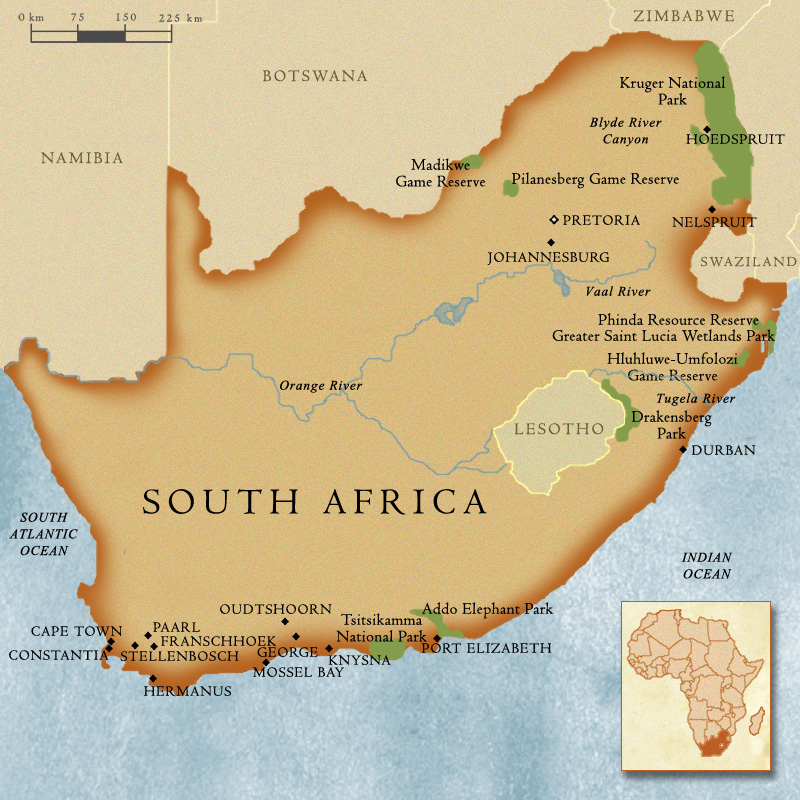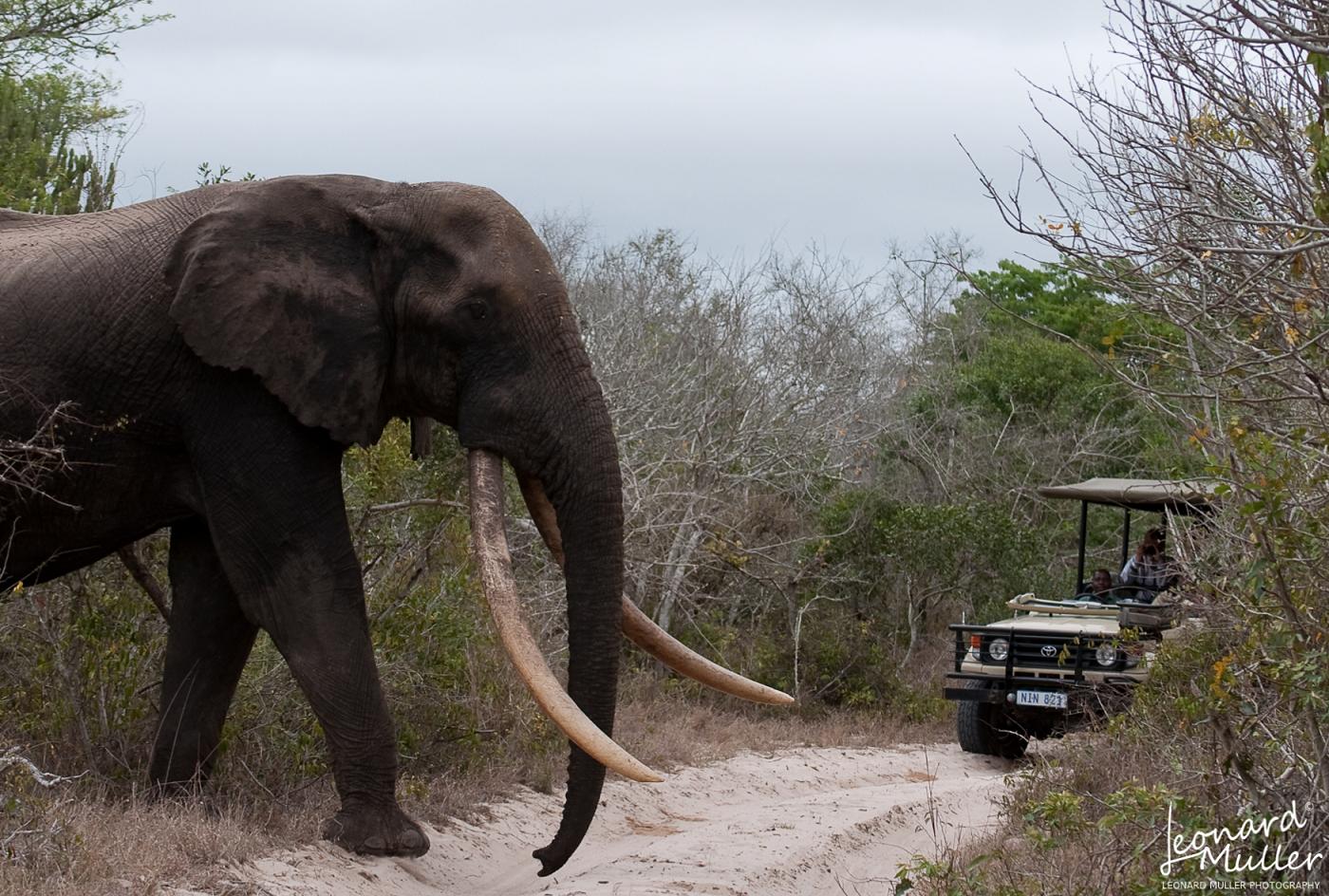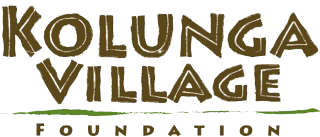South Africa Quick Facts
 Size: 470,693 square miles
Size: 470,693 square miles
Population: 49,004,031
Capital: Pretoria (administrative capital); Cape Town (legislative capital); Bloemfontein (judicial capital)
Climate: Temperate
Economy: Mining, Manufacturing, Agriculture
Language: English, Afrikaans, Zulu, Xhosa
Currency: South African Rand
Timezone: EST +7
Visa: Yes
Best Time to Visit: The weather is very seasonal but the game viewing is good year round in most reserves and National Parks. The winter months (June-August) can get very chilly and even snow is common. The summer months (January-March) will be hot and the chance of rain is greater.
The Country is quite large as you can see by the map and square miles covered. There are 21 National Parks in South Africa, 14 of which offer overnight accommodations. There are also several private game reserves dotting the lands in all parts of the Country. The greatest concentration of game viewing areas are found in the Northeastern section of the Country in the Limpopo and Mpumalanga provinces with Kruger National Park being the most significant.
Just outside the Kruger National Park's southwestern border lies several private game reserves such as Sabi Sand, Timbavati and Manyeleti of which holds the largest concentration of animals in South Africa. The Northern Kruger Park is less visited by tourists but gaining recognition quickly and provides excellent wildlife viewing in a shrubby mopaneveld, sand forest and dense tropical forest environment. Home to rare antekope species such as the Tsessebe, sable, roan and Eland.
 Endangered White Rhino There is a place in Africa where the wild elephants still roam. The legendary Ivory Route where the great tuskers still tramp their ancient pathways through dense sand-forest and tall yellow grass.
Endangered White Rhino There is a place in Africa where the wild elephants still roam. The legendary Ivory Route where the great tuskers still tramp their ancient pathways through dense sand-forest and tall yellow grass.
This is Tembe Elephant Park, a 300 square kilometre reserve between Zululand and Mozambique, home to Africa’s largest elephants as well as the smallest antelope, the suni. The Big Five also find their home here – lion, leopard, black and white rhino and buffalo, as well as more than 340 bird species and myriad other animals and plants.
Resident Lion who makes Tembe her homeIt is a world of hot silence and white sand, where the busy modern world ceases to exist and only the rising and setting of the sun marks the passage of time. It is also the ancestral home of the Tembe people, who co-own and manage Tembe Safari Lodge: a place of warm African hospitality, classic safari food, world-class personal service. This is where you will find the Africa of story and legend, of adventure and myth.
 One of the largest Tuskers left on the planet that resides at Tembe
One of the largest Tuskers left on the planet that resides at Tembe
The Ivory Route
Since the old days of Arab traders and transport riders, this area of Tongaland between Mozambique and Zululand has been known as the Ivory Route. The silent sand veld would echo to the shouts of the hunters, the creak of wagons and the passing conversations of travellers as they made their way from the ancient ports on the African East Coast to the home grounds of the mighty elephants, famous for their tusks. The hunting and trading ended years ago, but the tuskers remain.
More than 200 of these gentle and intelligent animals tramp the quiet paths through the brush, secure in the safety of this haven. It is a rare eco-system, this transition zone between tropical and sub-tropical, and this ecological diversity suits not only the elephants but also huge numbers of animal and bird species.
To preserve the pristine wilderness, Tembe park management employs a minimum-impact policy: non-intrusive visitor facilities; sand roads; sympathetic environmental management. Tembe’s elephants are acknowledged giants. Dr Johan Marais, writer of two books on Africa’s elephants (Great Tuskers of Africa and In Search of Africa’s Great Tuskers), believes that the largest elephants in the world can be found in the Tembe National Elephant Park. The largest of these are Isilo, Mkadebona and Siqualo. Isilo, the biggest of them all, is thought to be about 50 years old, to weigh about seven metric tons, and to stand 3,2 metres tall. His tusks are about 2.5 metres long, and weigh more than 60 kgs.
“During the early 1900s, great tuskers were the norm in countries like the Democratic Republic of the Congo, the south-western corner of Ethiopia, southern Sudan and the grassy plains of Tanzania and Kenya,” says Dr Marais. “But through hunting this has diminished to less than 40 bulls in the whole of Africa today. The best place in Southern Africa to see ivory elephants, in my opinion, is Tembe Elephant Park. Nowhere else have I seen so many bulls with such good ivory.”
“Tembe definitely features as one of the top reserves in Africa when it comes to conservation of elephants with large ivory. The park has been managed really well and the fact that no hunting or poaching has been permitted has allowed the elephant population to develop a fair number of great tuskers – more than Kruger currently!”
The KwaZulu-Natal region of South Africa is also home to the Hluhuwe-Umfolozi Game Reserve. Here you have great opportunity to get face to face with these amazing animals while enjoying the thrill of a bush walk. Another unique wildlife experience is the iSimangaliso Wetland Park along the eastern coast and home to the largest congregation of hippo and crocodiles in South Africa. Where else on Earth can you see the largest land mammal the Elephant and the largest ocean mammal the Whale in the same day.
Large Nile CrocodileThere is also the city life of Cape Town and Johannesburg both teeming with cultural and heritage sites plus excellent accommodations and culinary. Table Mountain is a must see for all visitors to South Africa while the Cradle of Humankind outside Jo'Burg might peak your interest as some claim the oldest known skeleton remains were discovered here.
There is really too much to put into words on this vast Country. To inquire about your South African dream vacation please contact us now.


